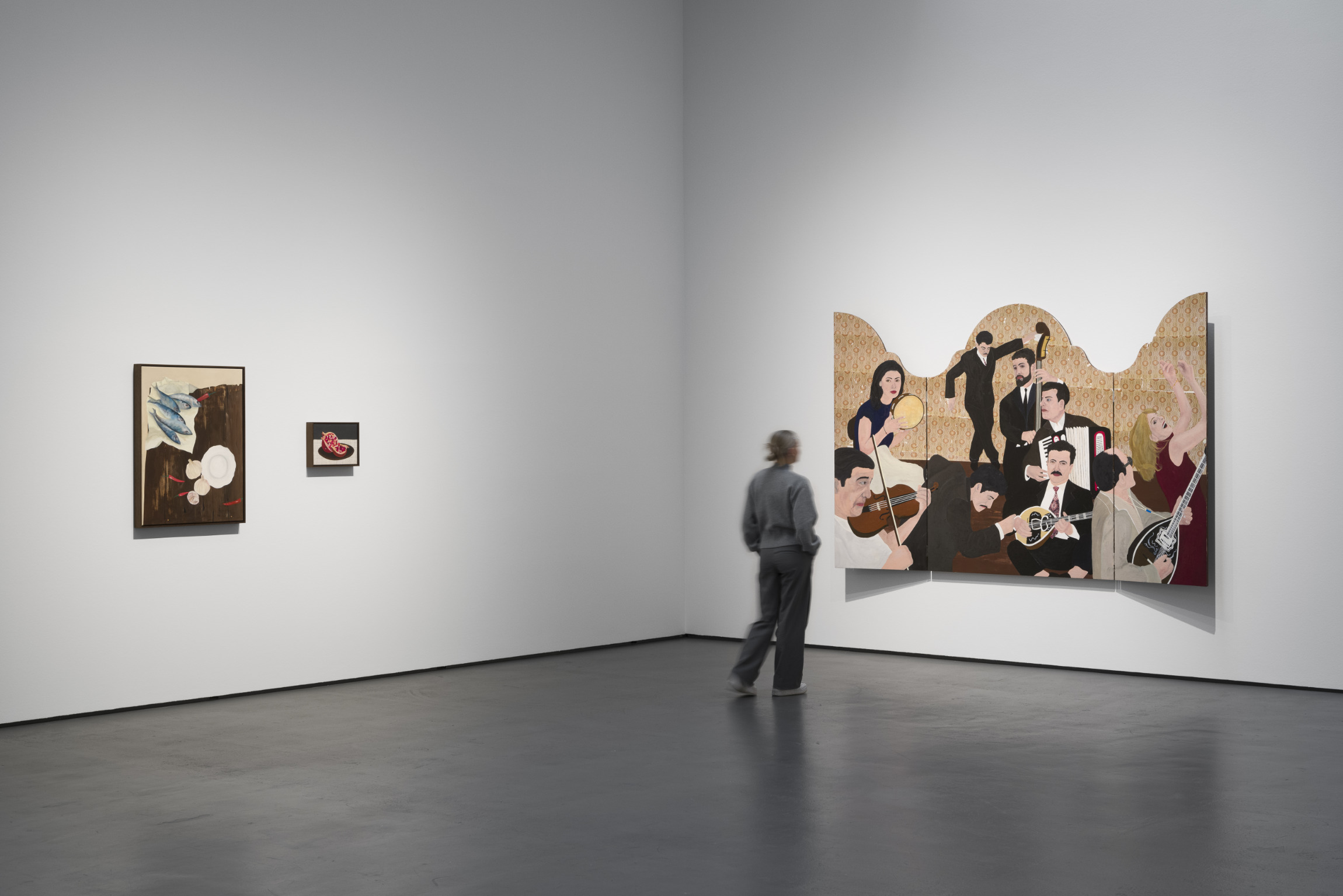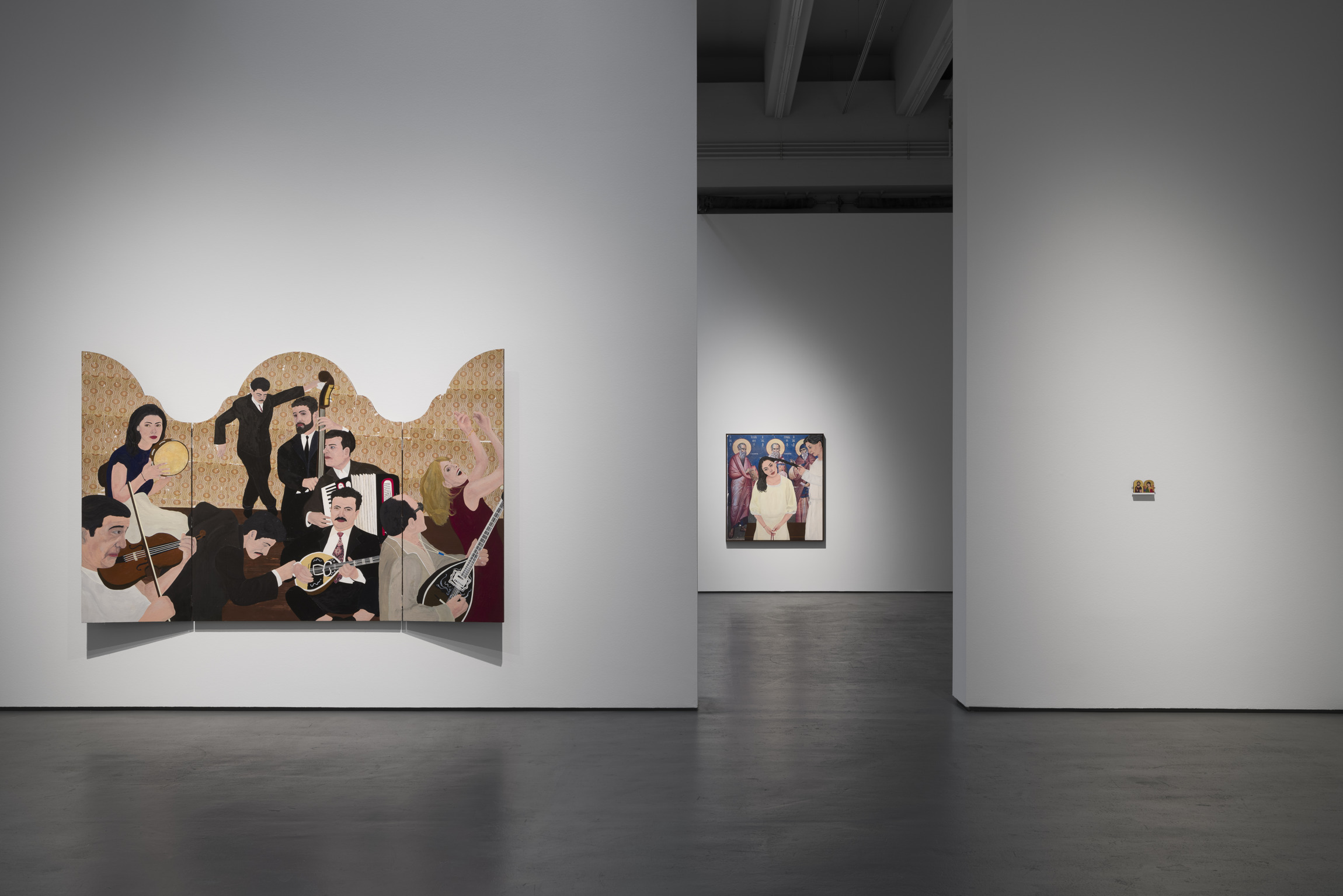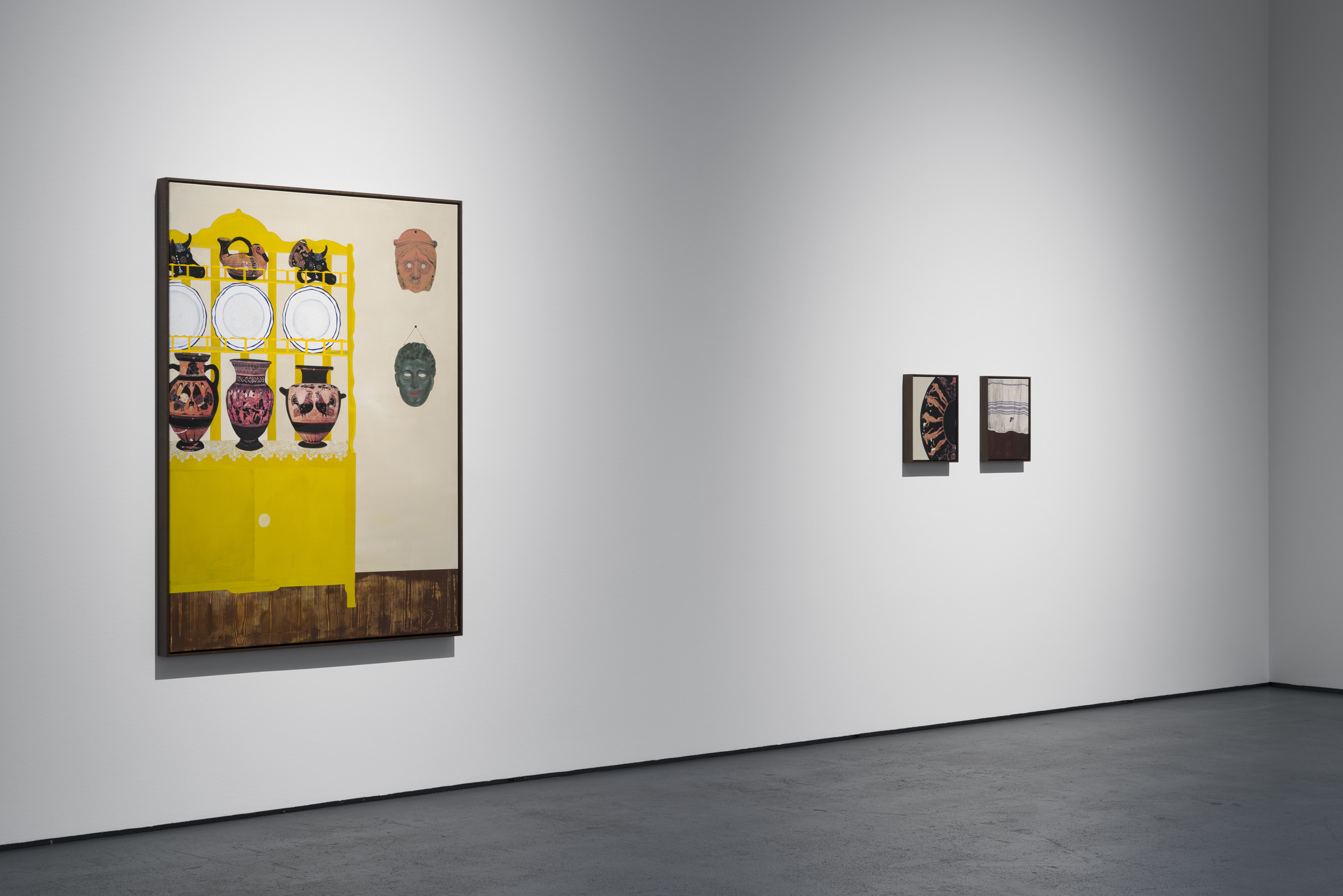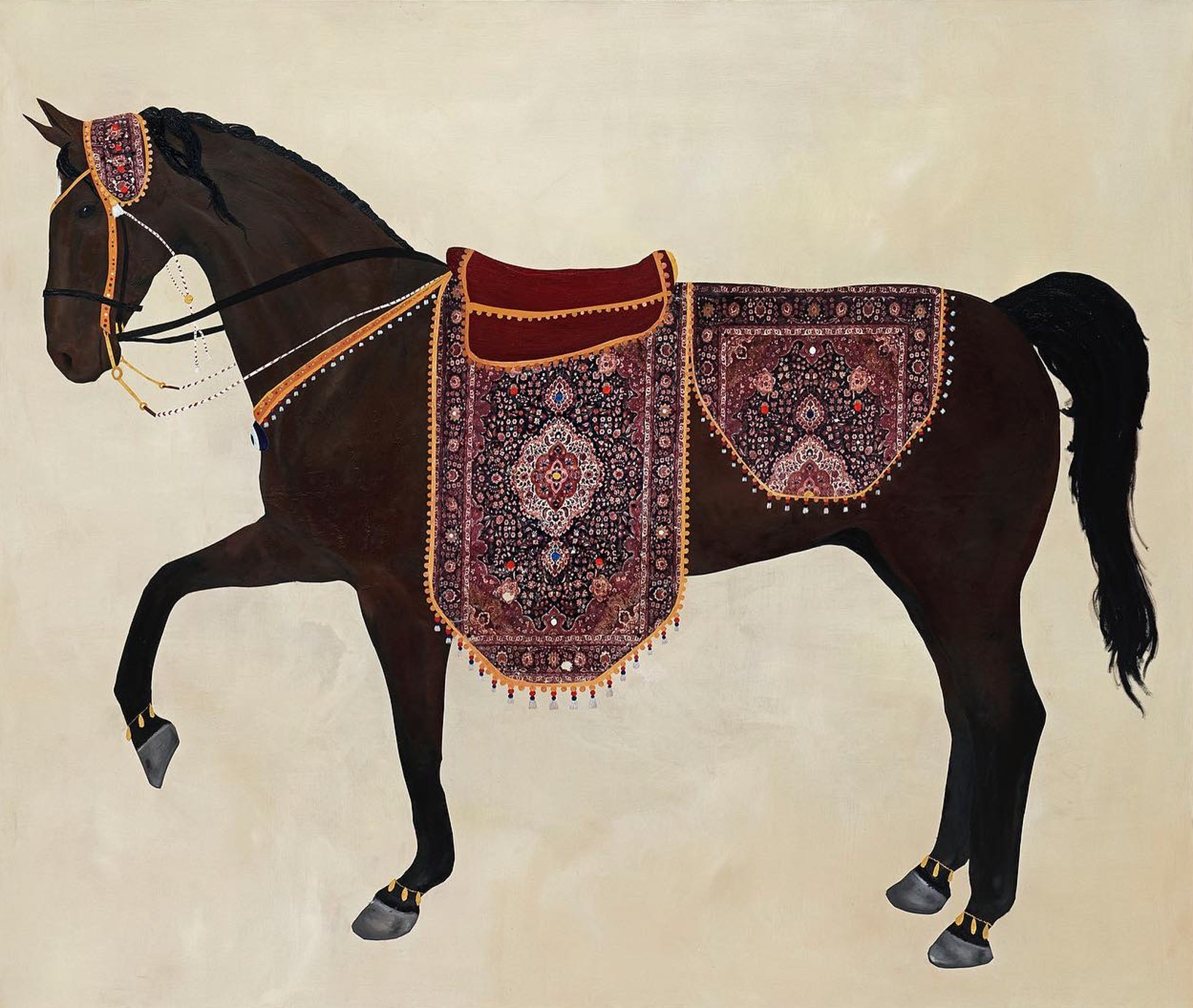Kiriakos Tompolidis
The More It Hurts, the Less It Shows
Works

Mother and Daughter
2024
Oil, acrylic and photo transfer on linen
150 × 135 cm

Self-portrait with Curtain
2024
Oil, acrylic and photo transfer on linen
150 × 170 cm

Leaving
2024
Oil, acrylic and photo transfer on canvas
170 × 130 cm

Collections
2024
Oil, acrylic and photo transfer on canvas
170 × 125 cm

- Still Life with Fish and Chili
2024
Oil and acrylic on linen
90 × 70 cm

Curve
2024
Oil, acrylic and photo transfer on linen
40 × 30 cm


Olives on Plate
2024
Oil and acrylic on linen
24 × 30 cm

A Swan for You
2024
Oil and acrylic on linen
90 × 115 cm
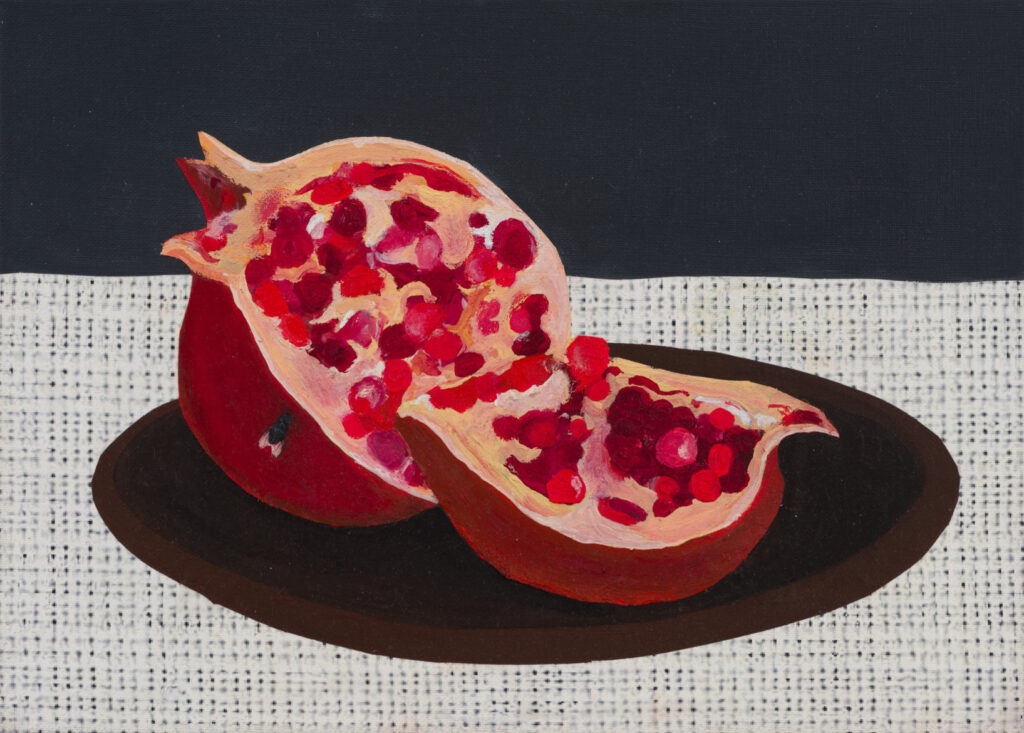
Pomegranate on Plate
2024
Oil, acrylic and photo transfer on linen
25 × 35 cm

Kitchen with Potatoes
2024
Oil, acrylic and photo transfer on linen
160 × 140 cm

Soft
2024
Oil on linen
35 × 45 cm

Moth and Light
2024
Acrylic, ink and photo transfer on canvas
120 × 90 cm

Woman in Bathtub
2024
Oil, acrylic and photo transfer on linen
120 × 90 cm

Orthodox Icon (Diptych)
2024
Oil on wood
9 × 14 cm

Grandma’s Light
2024
Oil, acrylic and photo transfer on linen
30 × 35 cm
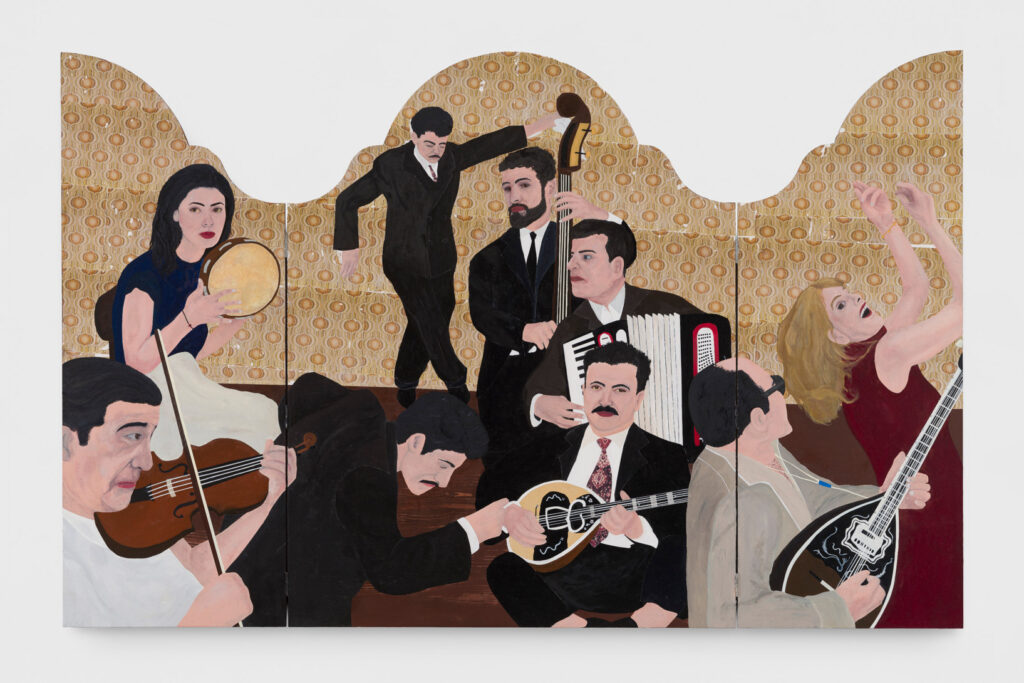
Tetelestai (Triptych)
2024
Oil, acrylic and photo transfer on wood
180 × 280 cm

Last Horse
2024
Oil, acrylic and photo transfer on linen
170 × 200 cm
Text
For his first solo exhibition with Galerie Judin, the young painter Kiriakos Tompolidis decided to unfurl his family album. He invites us to follow the footsteps of his Greek grandparents, who left their homeland to find a better life in Germany. Both they and his parents after them sought to adapt to their new surroundings, to blend in as seamlessly as possible. For the following generation, that of Tompolidis and his sister, there was a certain distance; a gap that raised questions about belonging, home and cultural identity. All his family members and their contrasting attitudes are featured in the works of this exhibition, including himself. They are about life between two “worlds”, as Tompolidis describes it, an in-between space that the young painter explores in his 16 paintings. But while the prevailing theme is indeed family and cohesion, almost all the figures are depicted as solitary. They are left to their own devices, alone with their hopes and fears. This loneliness and melancholy pervades his work.
From sunny Greece, Tompolidis’ grandparents moved to Germany’s industrial heartland, the Ruhr, in the 1960s. They came as so-called “guest workers”, who were expected and intended to move back to their home country in due time. They ended up staying, as so many others did. Since the beginning of his artistic career, Tompolidis has been preoccupied with what this relationship between guest and citizen, between Greece and Germany, meant for his family. In his practice, he interweaves the contingencies, aspirations, experiences, and physical objects of three generations. A portrait of his sister clashes with his parents’ ordeals – set against the space-age 70s wallpaper of his grandparents.
Wallpaper, carpets, patterns and textiles play a key role in Tompolidis’ compositions as symbols of home, homeland and cultural context. Much like carpets and textiles are the product of interlacing threads, Tompolidis frequently fuses printed paper with canvas using a specific imaging process by means of chemical treatment – a formula he doesn’t ever reveal. The motifs burn themselves into the canvas while the paper dissolves. And so, most of the wallpapers that emerge in his paintings were once, in fact, genuine wallpapers. Picturing them without a brush, as it were, highlights his particular interest in physical things. To complete the young painter’s alphabet, these tangible objects build symbolic bridges from his parents’ heritage to the treatment of homosexuality in ancient Greece and the post-war reality of his grandparents. The figurative and haptic are ultimately also expressed in his painting style: Most of Tompolidis’ paintings are rich and layered, the paint applied impasto, usually with his fingers, almost massaging the paint into the canvas.
Continue reading
In Tompolidis’ latest body of work, the exploration of the Greek Orthodox faith takes center stage. For the exhibition, he painted over a small, genuine votive image; replacing Christ and Mary with himself and his sister – depicted in their search for meaning and salvation. His sister appears again together with his mother, who can be seen doing their hair in a near-ritualistic manner before a frieze, an allusion to the church in the family’s home village. A smaller painting shows the grandmother’s modest oil lamp, whose fire always heralded the Easter celebrations, the most important festival in the Greek Orthodox calendar. Another work shows a golden chain with a cross that has slipped onto the sheets while the wearer was sleeping. The cross necklace has been a common accessory for generations of Greek immigrants. According to the artist, however, it stands less for religion than for tradition. Many religious objects and rituals have become folklore in this way: They are worn and performed out of habit, not so much faith or conviction. This habituality is a characteristic feature of young, post-migrant generations. Their members are caught between upholding a tradition they don’t fully understand nor believe in and embracing modernity. The weight of the ensuing doubts and questions can be felt in Tompolidis’ paintings. However, the figures do not linger in isolation or engage in soliloquy. They address the viewer directly and encouragingly. They demonstrate that their dealing with these doubts and questions is not subjective, not an individual pursuit, but that a sense of belonging is ultimately the result of societal discourse, affecting the painter and his protagonists as much as the viewers.
Kiriakos Tompolidis was born in Essen in 1997. Until summer 2024, he studied painting at Universität der Künste Berlin. Reflections on identity and origin, on the one hand, and the use of collaging techniques, on the other, were marks of his painterly work from an early age. By fusing these two predilections, the young painter developed his own, mature artistic language, which quickly set him apart from his fellow students and attracted the interest of the international art world. In 2023, Danny First’s The Cabin Residency in Los Angeles put the young artist on the international map. Today the artist is represented by Galerie Judin in Berlin. Following gallery exhibitons, the Miettinen Collection in Berlin staged the artist’s first institutional presentation in 2023. After his current solo exhibition, Galerie Judin will show a special solo presentation with new works by the artist at the Independent in New York in May 2025. In the same year, Vielmetter will show the artist’s next solo exhibition in Los Angeles.
Video
Exhibition Tour
Video Art/Beats
Catalogue

The More It Hurts, the Less It Shows
Text by
Juerg Judin and Pay Matthis Karstens
In English
255 × 190 mm
36 pages, softcover
Published by Galerie Judin, Berlin 2024
17 color ill.
ISBN: 978-3-943689-14-3




